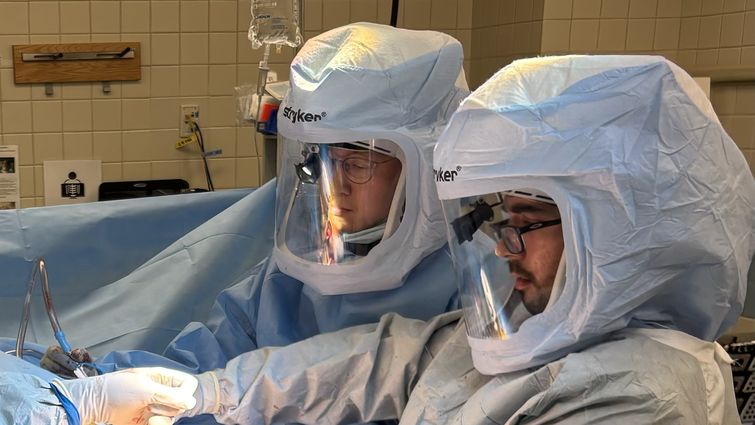

The Hana Table utilizes a modern approach to hip replacements.
For patients suffering from debilitating hip pain caused by arthritis or other conditions, hip replacement surgery can provide a life-changing solution. With over 544,000 hip replacements performed each year in the United States, advancements in surgical methods and medical technologies have made replacements safer, more efficient, and capable of providing longer-lasting relief for patients.
One such method of hip replacement utilizes a specialized operating table known as the Hana Table, which allows for real-time X-ray guidance during surgery. Parke Hudson, MD, orthopaedic surgeon and hip replacement specialist at Loma Londa University Health, says the Hana Table helps ensure precise component placement, improves leg length accuracy, and enhances overall joint stability.
“With the Hana Table, I can continuously monitor progress with X-rays, ensuring accuracy at every step of the process,” Hudson says. “I like to think of it as measuring twice and cutting once.”
While there are several methods for performing a hip replacement, Hudson highlights the advantages of using the Hana Table.
Traditional vs. modern hip replacements
Recently, the anterior approach has gained popularity for hip replacements. A hip replacement procedure involves replacing the ball and socket of the hip joint using durable materials like metal, plastic, or ceramic to restore movement and reduce pain. Traditional hip replacements, which are still highly effective, are performed using the posterior approach, where the surgeon accesses the joint from the back. This method requires cutting through the gluteal muscles, which can lead to longer recovery times for patients.
More modern hip replacements utilize an anterior approach, which accesses the joint from the front, allowing surgeons to work between the muscles rather than cutting through them. This approach can result in less muscle trauma and quicker recovery times.
Hip replacements with the Hana Table
For patients with hip arthritis or painful symptoms that affect their quality of life, hip replacement surgery using the Hana Table allows for a precise and minimally invasive approach. The Hana Table is designed to position the patient in a way that optimizes access to the hip joint without the need to cut through major muscles or tendons.
During the procedure, the patient is positioned in a way that allows for real-time X-ray imaging throughout the surgery.
“This continuous monitoring helps ensure accurate placement of the prosthetic components, improving outcomes and reducing the risk of complications such as leg length discrepancies or implant misalignment,” Hudson says.
The entire surgery, which typically lasts between one and two hours, often allows patients to begin walking the same day and return home within 24 hours.
Modern hip replacement surgery is among the most successful procedures in orthopedic medicine. “If you can no longer do the things you love with the people you love, that’s when it’s time to consider surgery,” Hudson says.
For more information on hip replacement surgery, call us at 909-558-2808 or visit our website here.


